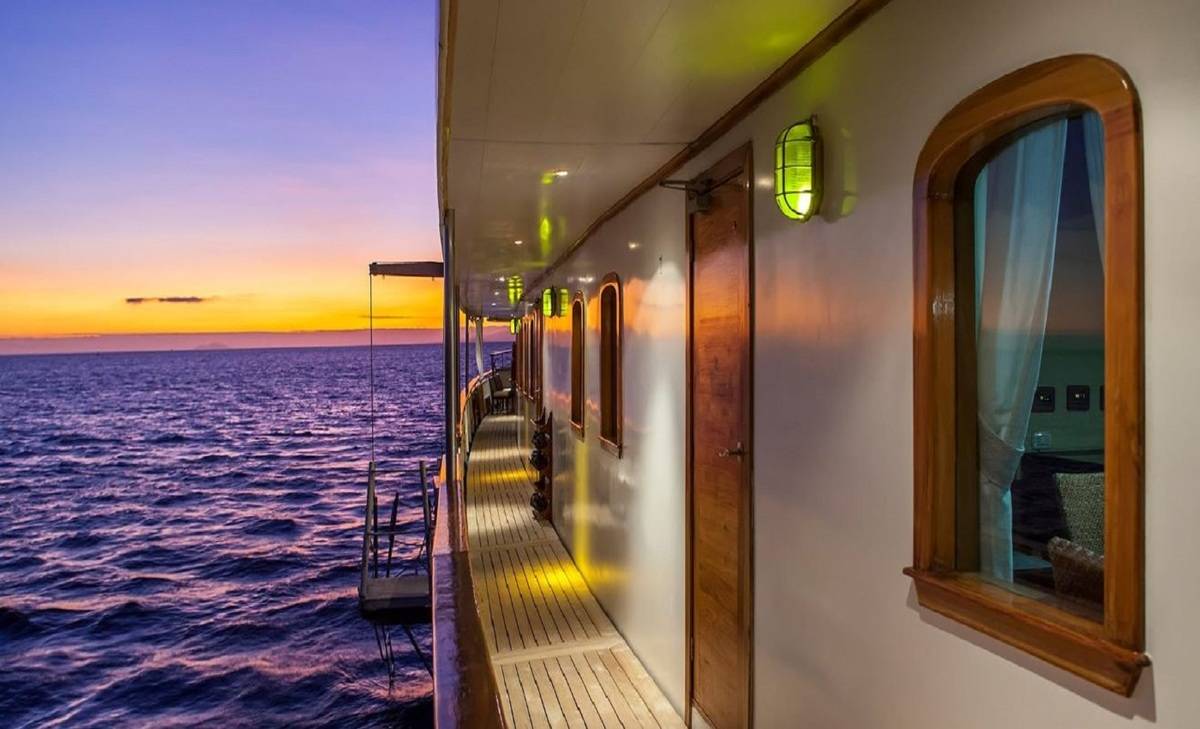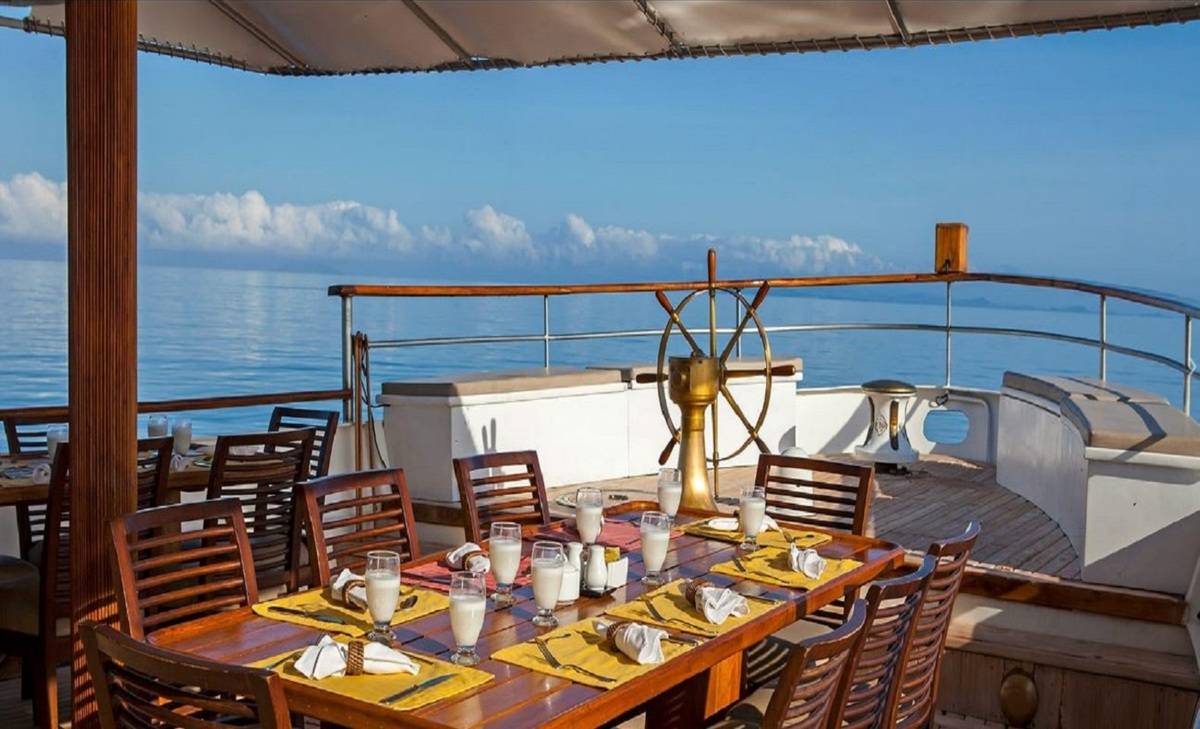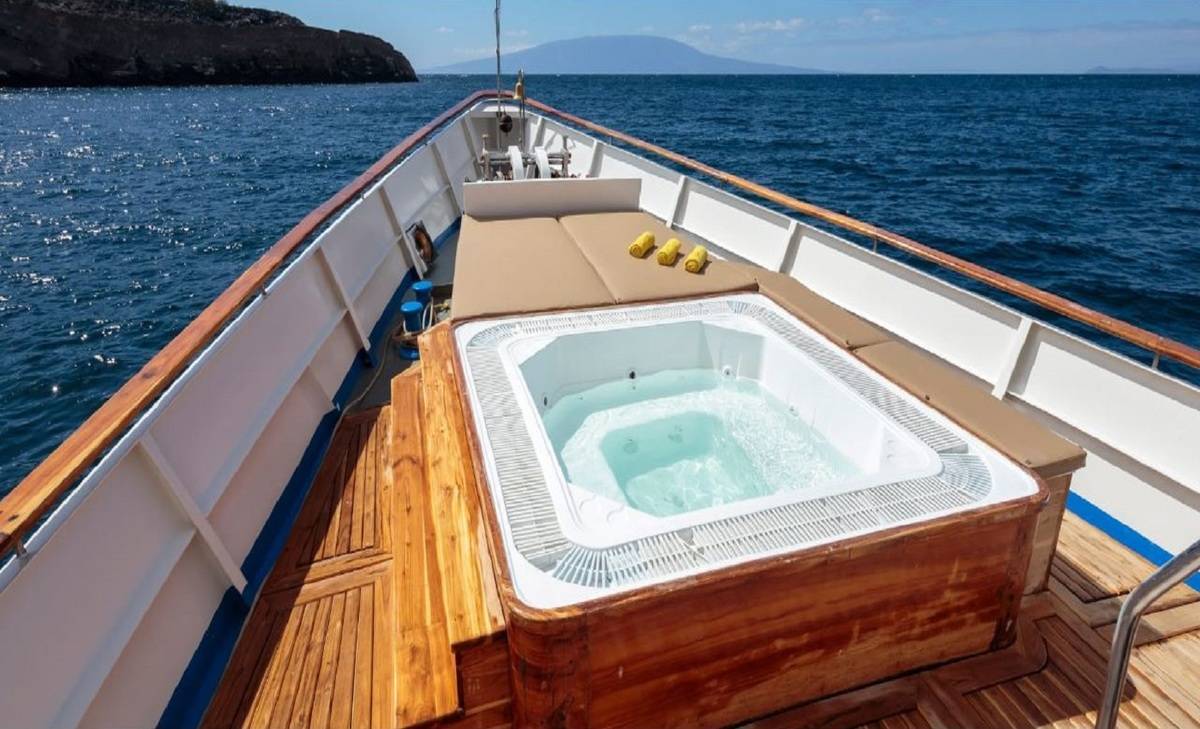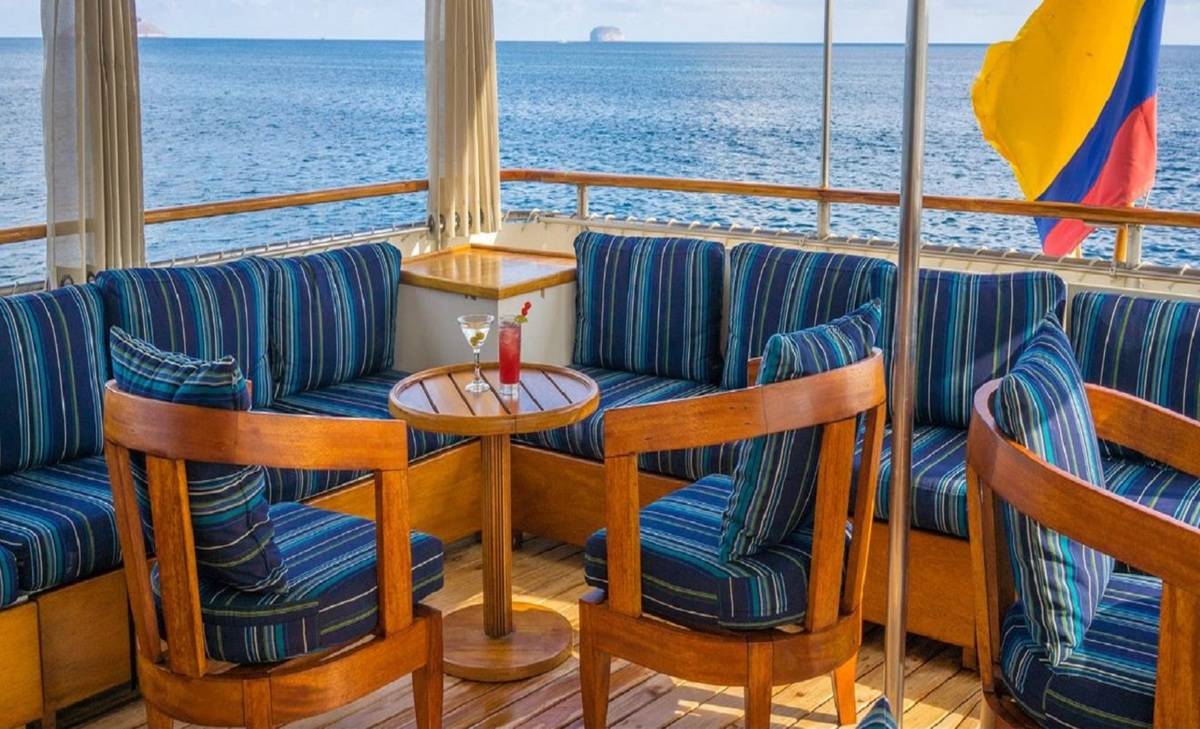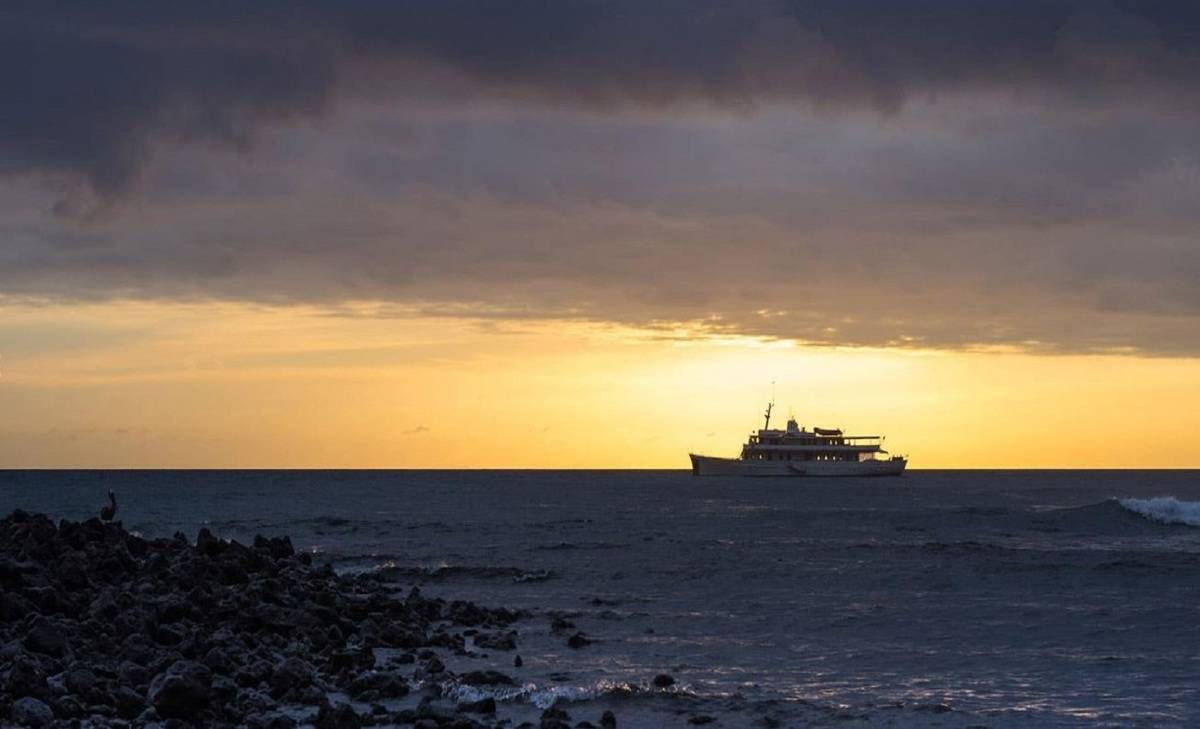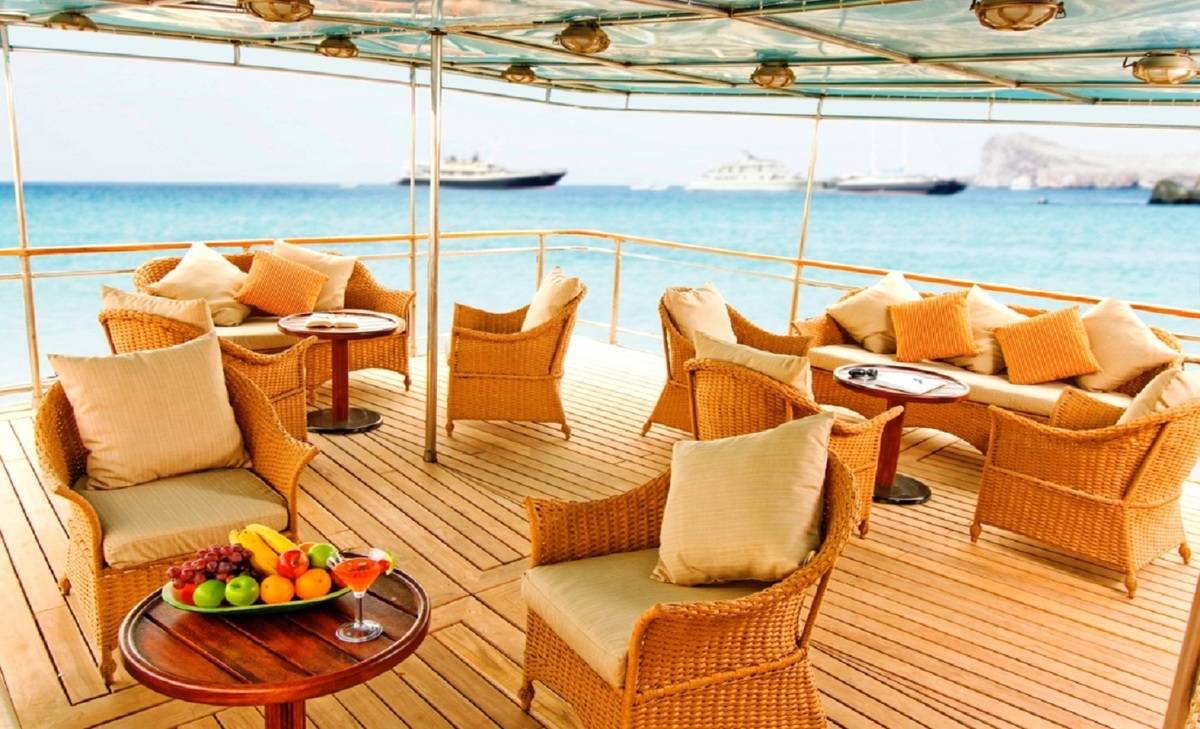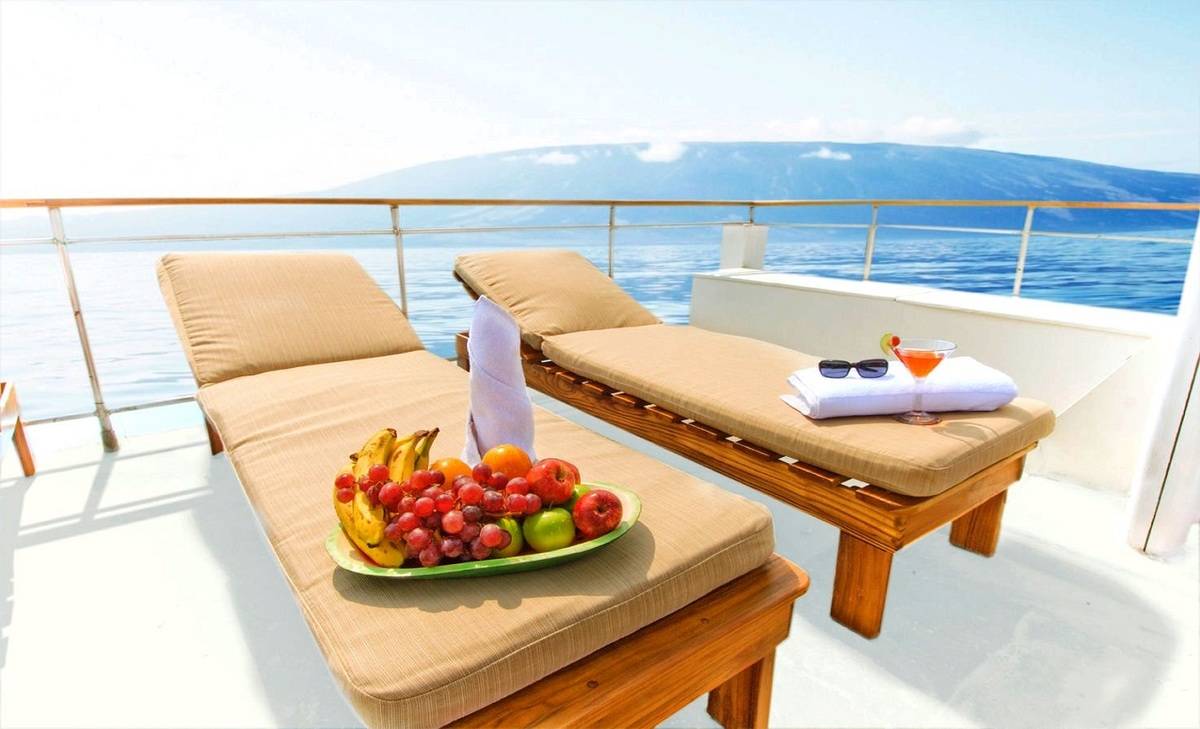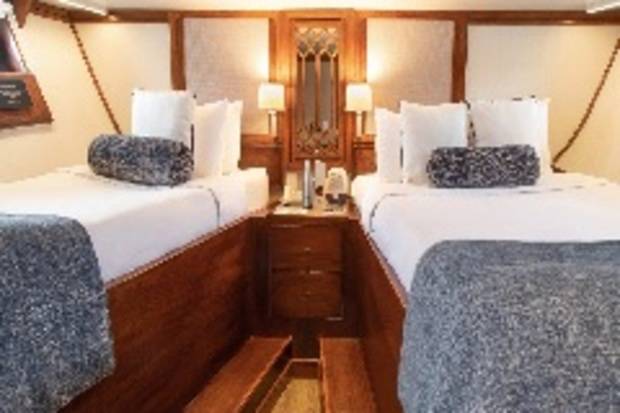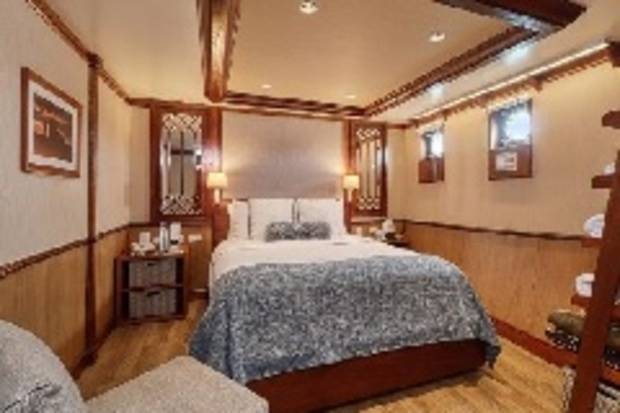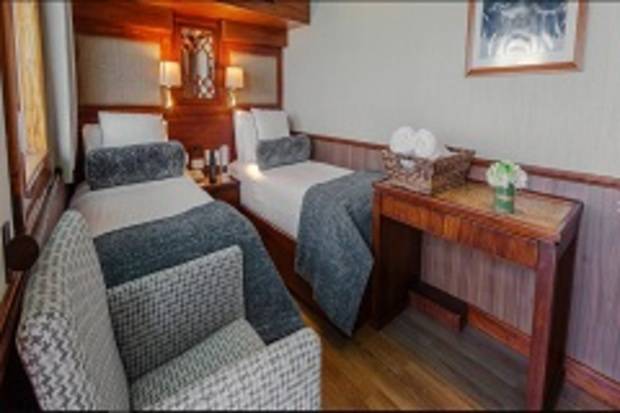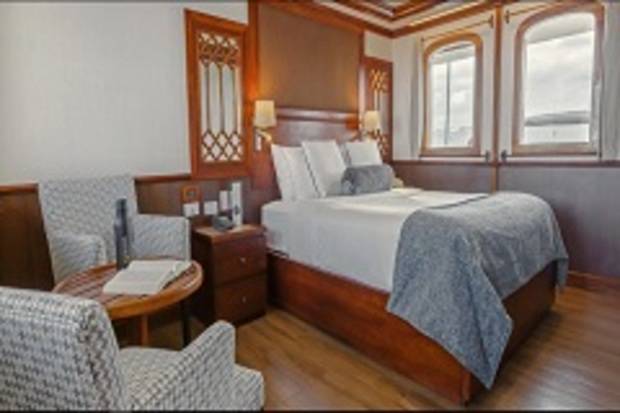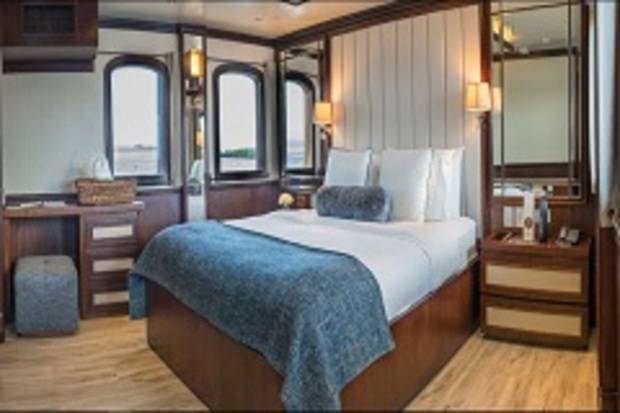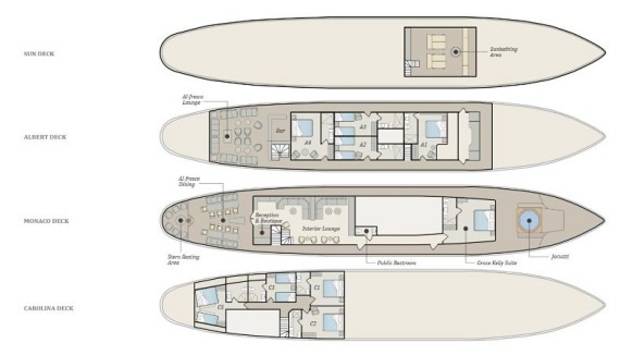Day 1: Arrive to Baltra Island Airport - Santa Cruz Island: Charles Darwin Research Station (Breeding Center) & Highlands (Tortoises Reserve)
You’ll need to rise early this morning to catch your flight to the Galapagos. All our flights to the Galapagos originate in Quito and stop briefly in the port city of Guayaquil to take on passengers before heading on to the islands. For this itinerary you will be landing on the island of Baltra. After passing through Galapagos National Park inspection your National Park Guide will be there to greet you holding a sign with the name of your yacht on it and will accompany you on the short bus ride to the Itabaca channel.
Los Gemelos are surrounded by a Scalesia forest. Scalesia is endemic to Galapagos and many endemic and native species call the forest home. This is an excellent place to view some of Darwin’s famous finches along with the elusive and dazzling vermillion flycatcher.
We’ll enjoy our first Pacific sunset aboard the Grace yacht by celebrating happy hour atop her sky lounge where drinks are available daily along with hors d’oeuvres. A little later we gather in the main salon for a presentation by our guide on the next day’s activates and visitor sites, before sitting down to dinner. We spend a bit more time in port this evening before setting sail for the island of Floreana.
Day 2: Floreana Island: Post Office Bay - Floreana Island: Punta Cormorant, Champion or Devil’s Crown
Floreana has had a colorful history: Pirates, whalers, convicts and a small band of somewhat peculiar colonists—a self proclaimed Baroness among them—who chose a Robinson Crusoe existence that ended in death and mystery. Today roughly a hundred Ecuadorians inhabit the island. In 1793 British whalers set up a barrel as the island’s post office, to send letters home on passing ships. The tradition continues to this day, simply by dropping a post card into the barrel without a stamp. The catch is you must take a post card from the barrel and see that it gets to the right place. That is how the system began and continues to this day. Some claim it works better than the official Ecuadorian post office. You’ll have a chance to continue the traditions by sending your own card and picking up others.
Punta Cormorant offers two highly contrasting beaches; the strand where we land is composed of volcanic olivine crystals, giving it a greenish tint that glitters in the sun. From here you’ll notice the small cinder cone that forms the point. Our landing is just to the west of the cinder cone where a trail crosses the neck of an isthmus to a beach of very fine white sand known as Flour Beach. Flour Beach was formed by the erosion of coral skeletons. Between the two beaches, in a basin formed by the surrounding volcanic cones, is a hyper-saline lagoon frequented by flamingoes, pintails, stilts and other wading birds. We stop at the lagoon and then continue on the trail to Four Beach. Be careful not to wade into the tide with bare feet! If you stand at the edge of the water and look into the tidal area you will soon notice that the silty surf is rife with rays. Sea turtles also surf the waves off the beach. We return to our yacht and set out to our snorkeling destination as we don wetsuits while making our way around Punta Cormorant.
Alternatively we may snorkel at Devil’s Crown which is located some 250 meters (700 ft) north of Punta Cormorant. The crown is an old submerged volcanic cone that has been worn down by waves. Devil’s Crown is home to a myriad of marine species including several species of corals, sea urchins, and many other creatures including a great number of fish species, making this place one of the best snorkeling sites in the Galapagos. The eroded crater walls form a popular roosting site for seabirds including boobies and pelicans. The snorkeling begins outside the crater to the southeast, where a swift current will take you for a ride along the north side of the crown and right into the middle. Relax, enjoy the ride and let the current do the work. After the ride keep your eyes open for spotted eagle rays and golden rays that like to swim near the crown. Once back aboard the Grace you’ll want to soak in the warm Jacuzzi after peeling off your wetsuit and then retire for hors d’ouevres and drinks to enjoy the sunset.
Day 3: Española Island: Punta Suarez - Española Island: Gardner Bay
Hood is the southernmost island of the archipelago, and is one of the most popular due to the breathtaking variation and sheer number of fauna that greet visitors along with well known Gardner Bay. The giant tortoise was reintroduced to Hood in the 1970’s and counts as one of the park’s great success stories. They reside in an off-limits area, but don’t worry—the famous giant tortoise awaits you on other islands!
On the northeastern shore of Hood, Gardner Bay offers a magnificent long white sandy beach, where colonies of sea lions laze in the sun, sea turtles swim offshore and inquisitive mockingbirds boldly investigate new arrivals. You will be lured from the powdery white sand into the turquoise water for a swim, but just a little further off-shore the snorkeling by Gardner Island offers peak encounters with playful young sea lions and schools of surprisingly large tropical fish, including yellow tailed surgeonfish, king angelfish and bump-head parrot fish. The young sea lions like to snack and play along Gardner Island’s sea cliff. They dart up from the depths, playfully show off their skills and then disappear. Sleepy white-tipped reef sharks can also be seen napping on the bottom. Gardner Bay and Islet also offer inviting waters for those interested in kayaking. For all who visit here, Española is a highlight of the Galapagos.
Day 4: San Cristobal Island: Punta Pitt - San Cristobal Island: Lobos Island & Kicker Rock
Punta Pitt is located at the east end of San Cristóbal Island. The trail includes an olivine beach approximately 90 meters and a trail that ascends to the top of a volcanic tuff hill passing through several natural viewpoints. Punta Pitt is composed of volcanic tuff substrate.
Following our snorkeling outing you will discover that the best place to warm up from your dip is in the Grace’s Jacuzzi. Heading up the coast from Isla Lobos we will have a chance to visit Leon Dormido, also known as Kicker Rock, a spectacular formation that rises 152 meters (500 feet) out of the Pacific. It takes the form of a sleeping lion, hence it’s Spanish name. From another angle one can see that the rock is split forming a colossal table and, piercing the sea, a great chisel ready for etching. We will circumnavigate the rock formation which is an ancient and eroded volcanic lava tuff cone in search for birds, and possibly, hammerhead sharks.
Day 5: Santa Fe Island - South Plazas Island
Santa Fe offers one of the more beautiful and sheltered coves in the islands. Its turquoise lagoon is protected by a peninsula of tiny islets forming an ideal anchorage. The island lies southeast of Santa Cruz Island within sight of Puerto Ayora. Geologically it is one of the oldest islands in the archipelago and for many years was thought to be a product of an uplift event. Through satellite imagery it has been possible to determine the island’s volcanic origins.
South Plaza Island lies just a few hundred meters off the east coast of Santa Cruz Island. South Plaza is one of the smallest yet richest islands in the archipelago. Just over 400 feet wide, it was formed by lava upwelling from the bottom of the ocean. Our landing is in the channel between North and South Plaza, where the island tilts toward the water. South Plaza is known for its lush and diverse flora. A grove of luminescent green prickly-pear cacti, a ground cover of red sesuvium, the turquoise waters of the channel and fiery sally lightfoot crabs combine to create a colorful palate of an island to explore. One of the big attractions here are the friendly yellow land iguanas waiting for lunch to drop from a cactus in the form of a prickly pear. We follow a trail up the tilt of the island to cliffs that look out over the ocean. Swallow-tailed gulls with red banded eyes nest atop the overlook where you may spot marine life such as manta rays. South Plaza has a very healthy population of sea lions including a colony of bachelors that sit atop the cliff. They unintentionally polish the surrounding rocks with the oil from their fur. We may see red-billed tropic birds, Nazca and blue-footed boobies catching rides on the wind currents.
Day 6: North Seymour Island - Santiago Island: Bartolome
North Seymour Island was lifted from the ocean floor by a seismic event, and its origins as a seabed give the island its low, flat profile. Cliffs only a few meters high form much of the shoreline, where swallow-tailed gulls sit perched in ledges. A tiny forest of silver-grey Palo Santo trees stand just above the landing, usually without leaves, waiting for the rain to bring them into bloom. This island is teeming with life! You might have to give way to a passing sea lion or marine iguana. Blue-footed boobies nest on either side of the trail where mating pairs perform their courtship dance. You are likely to see fluffy white chicks peeking out from beneath their protective mothers. The trail follows the eastern shore along the beach. You may be fortunate to witness flocks of brown pelicans and blue-footed boobies hunting schools of fish. The boobies, which look so comical on land, are ideally adapted as dive bombers and easily pierce the water, zeroing in on their targeted prey. Frigate birds with wingspans of up to 5 feet soar overhead and all around. They were named for the way that the trim of their wings in flight are reminiscent of the square rigged sailing warship. Not coincidentally frigate birds are also called Man O’ War birds and they live up to that name in a literal way when they target boobies, pelicans and other birds to steal their catch. Because the frigates are pelagic, they lack the ability to take off from the water, so they do better at snatching fish from the surface or simply stealing them. They also target marine iguanas and young baby sea turtles. The trail turns east and inland to reveal the nesting stronghold of the frigates. Here you can see males with large, bright red, inflated throat sacks known as gular pouches, all done in an effort to attract females. Your guide will point out the difference between the Magnificent, or Man O’ War frigates and their Great frigate bird cousins. Large puff-ball frigate bird chicks inhabit nests, waiting for their parents to return with a meal. Even at this young age they possess long hooked beaks and act defiant when they feel threatened. You will also get a closer look at the feathers of the proud parents and notice their iridescent quality and deep green tinge.
This evening will be especially relaxed and you can have a long lingering soak in the Jacuzzi. The Grace yacht can stay anchored where she is tonight as we are already within sight of our morning’s landing site across the channel just to the south. The view east toward the tiny twin table mountain islands of Daphne Major and Daphne Minor is particularly inviting with the sun setting behind them.
Day 7: Santiago Island: Chinese Hat - Santa Cruz Island: Dragon Hill
Tiny Sombrero Chino (Chinese Hat) Island is named for the resemblance its shape has to a traditional Chinese Coolie’s hat. Today’s visitor site is off limits to larger groups and day boats, making Sombrero Chino, along with Daphne Major, one of the least visited sites in the central islands. The island lies just off the southeastern tip of the large nearby island of Santiago; separated by a narrow channel which makes for very calm, protected waters. Our landing site is a tiny crescent shaped cove with sandy white beach cradled between black lava rocks and the crystal turquoise waters of the channel. A sea lion colony likes to rest on the warm white sands, while the rockier sections of the coast are alive with fiery colored sally lightfoot crabs. Marine iguanas sun themselves atop the rocks after foraging for algae in the channel. American oyster catchers stalk the tide pools stabbing at shellfish with their bright orange beaks. A quarter mile (400 meter) trail sets off into the island’s volcanic interior to explore its rock formations, including excellent examples of pahoehoe lava resembling black rock ropes. The area is inhabited by ground hugging red sesuvim plants and curious lava lizards.
While we walk through the Scalesia forests that ring the hill, keep your eyes open for the dragons. Endemic cactus finch and woodpecker finch perch overhead. The loop trail heads inland and up the hill. The rough terrain makes this hike a bit challenging, but the view back toward the bay is rewarding. The real reward, of course, is the dragons hiding in the thicket which you are sure to spot. Back at the beach you may be lucky enough to see one of Santa Cruz Island’s fearless Galapagos hawks perched atop the lava surveying the surroundings.
Day 8: Santa Cruz Island: Black Turtle Cove - Baltra Island Airport
This last morning of our voyage through the Galapagos we visit Black Turtle Cove. Located on the northern shore of Santa Cruz, the cove is a living illustration of how mangroves alter the marine environment to create a rich and unique habitat. Four species of mangrove crowd from the shore out into the lagoon, which stretches almost a mile inland. As we drift through the quiet waters in our dinghy, we are likely to see spotted eagle rays and cow nosed or golden rays, which swim in a diamond formation. White-tipped reef sharks can be seen beneath the boat and Pacific green sea turtles come to the surface for air and to mate. Sea birds, including brown pelicans, blue herons and lava herons, come to feed in the cove which has also been declared a “Turtle Sanctuary”.
It’s time to begin your journey home as we set sail for nearby the Baltra Island. During WWII the island was a US Air Force base and one can still see the remnants of the old foundations left behind from that era once ashore. It doesn’t take long for the Grace to navigate north along Baltra’s western shore to the island’s port. Don’t worry about your bags, your guide will instruct you on how to prepare your luggage and have it ready for pick up in your cabin. Our crew will see to transporting your luggage ashore where you will reunite with it at the airport. All you need to do is take along your carryon luggage in the panga for the short crossing to shore. Once there a bus will pick us up for the 5 minute drive to the airport. Your guide will be there to make sure you are checked in on the proper flight. This is your last chance to purchase souvenirs in the Galapagos and the airport offers an assortment of shops where you can purchase everything from baseball caps and t-shirts to animal figurines, jewelry and much more; all with a Galapagos theme. There is one final check point before you enter the waiting area from which you will board your flight. Almost all flights to the mainland stop in Guayaquil and continue on to Quito so make sure you know where to get off the plane. We say farewell to the Galapagos as you begin your journey home, or on to other destinations like the Ecuadorian highlands, Amazon or nearby Peru.


